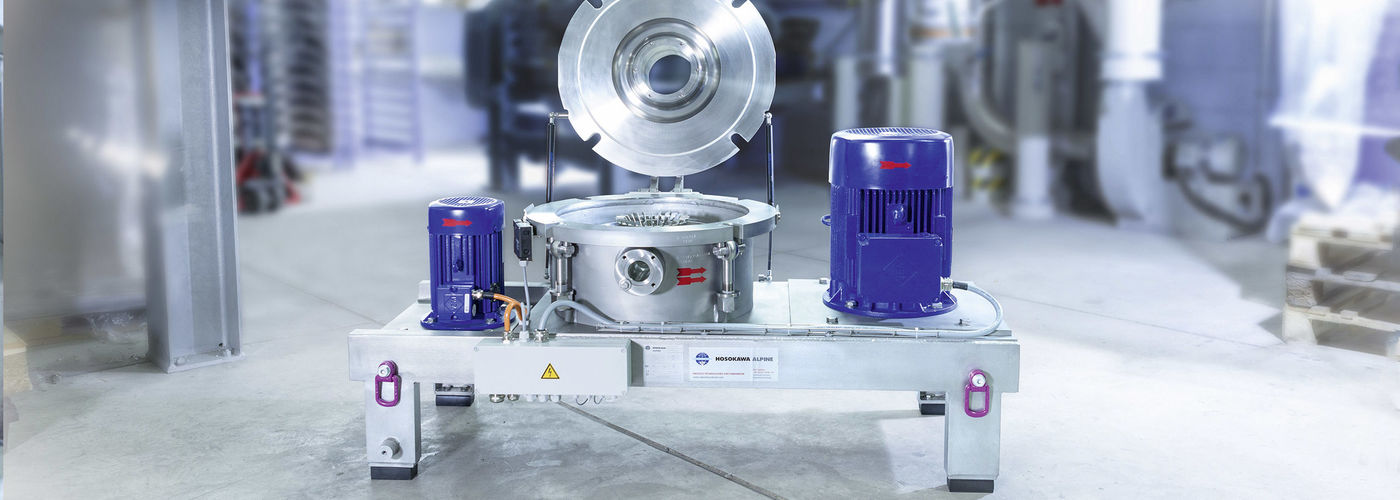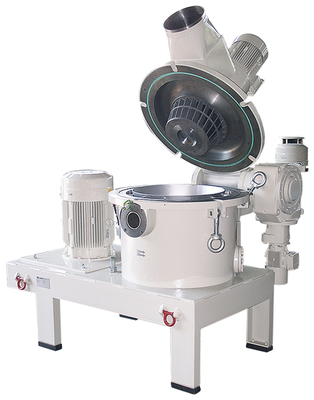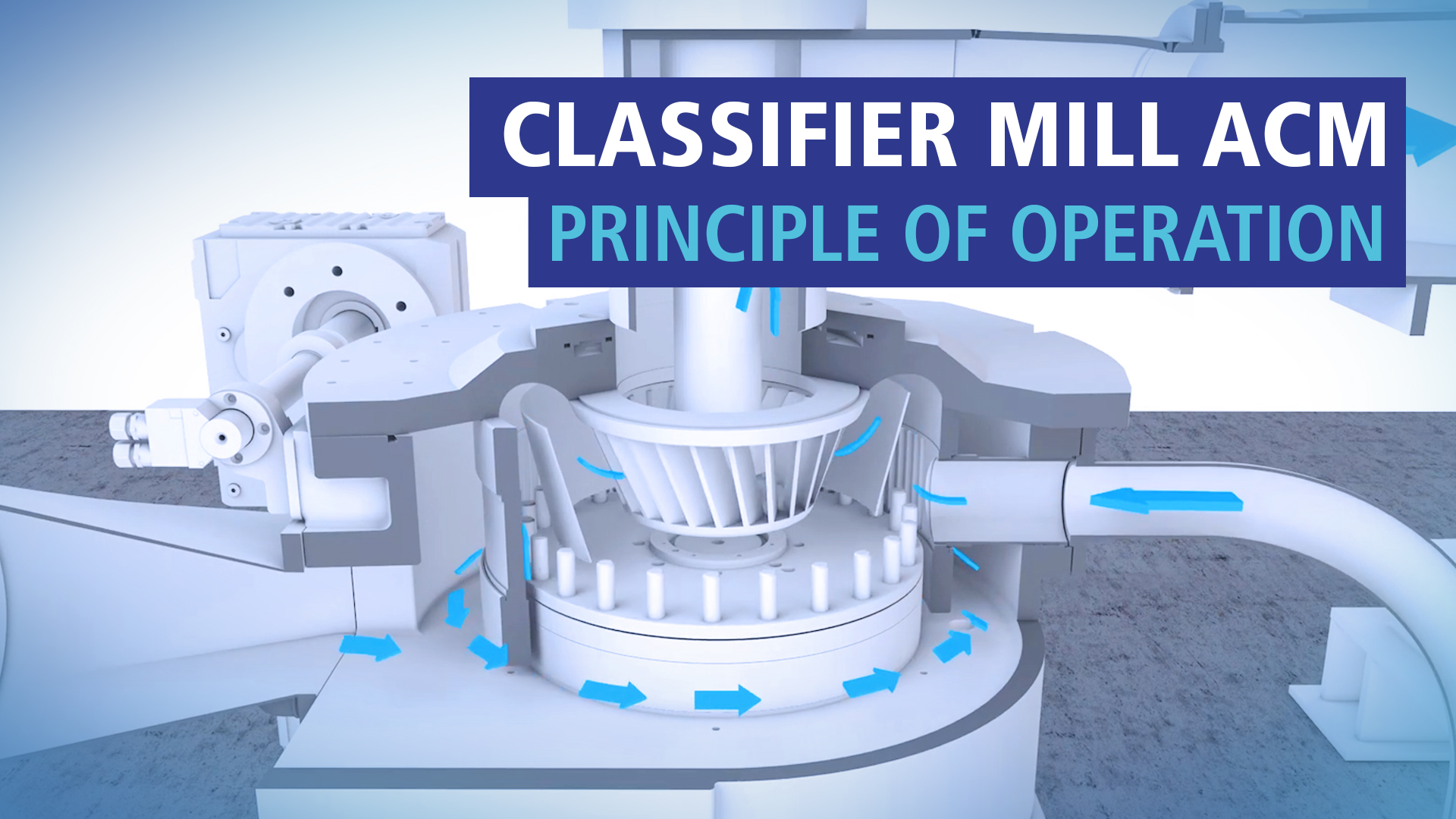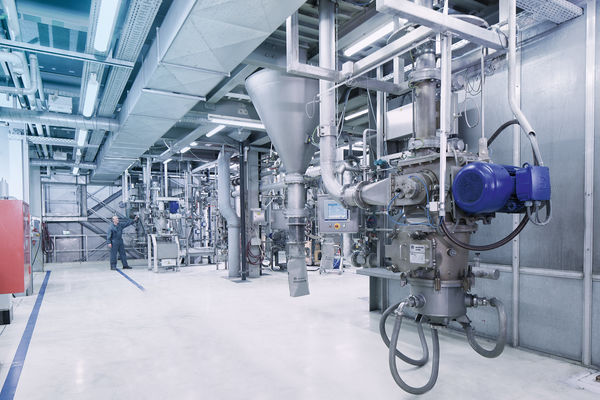The product is fed into the ACM pneumatically. Size reduction is a result of the feed product impacting against the rotating grinding elements and against the stationary liner. At beater tip speeds of up to 140 m/s, fineness values of d97 = 10 µm are achieved. The product becomes entrained in the cooling, conveying and classifying air drawn through the mill by the downstream fan and is routed along the guide vanes of the vane ring.
Characteristic for the ACM is the integrated dynamic classifier. The product/air mixture is distributed uniformly by the guide vane ring to the rotating classifier. Because of the two opposing forces and the different masses of the particles, the product is separated in the classifying zone into a coarse fraction and a fine fraction. The coarse material is rejected by the classifying wheel and returned to the grinding zone for further comminution. The fines pass through the classifying wheel and exit the mill. The cut point is a function of the classifying wheel speed, which can be steplessly adjusted even during operation.
Four different design variants plus a laboratory version of the ACM were developed to ensure being able to fulfil customer requirements in a flexible manner.
- ACM CX - The coaxial bearing arrangement of both classifier and grinding disc shafts makes a vertical product discharge possible, which in turn prevents product deposits.
- ACM CL with direct classifier drive is ideal for all those applications where the preferred configuration is a horizontal product discharge duct that has the shortest possible connection to downstream system components.
- ACM EC (Easy Clean) was developed to meet the demands for quick and easy cleaning. This is especially important for those branches of industry where the product is changed frequently or for batch production.
- ACM EC-CL combines the advantages of the CL model, namely compact configuration with short connections to downstream system sections, with those of the EC model, with the main focus laid on short cleaning times.
- ACM 5 for laboratory and small-batch production. With the newly developed easy-clean concept, the ACM machine size 5 offerd a high degree of user-friendliness and a minimum of cleaning effort when changing products. A space requirement of just 15 m², a mains power socket and a compressed air connection is all this mill needs for operation.
- ACM NEX – especially for powder coating production. By avoiding effective ignition sources, the mills in this series are unpressurised, ATEX-compliant and tested for explosion protection.
Retrofittable impact elements increase efficiency
In addition to the versions mentioned above, the ACM classifier mill can be equipped or retrofitted with the newly developed E3 beaters. Karl Bubenhofer AG has increased its throughput in powder coating grinding enormously while also reduced its energy requirements.
Our case study gives you comprehensive insight into the project.
Innovative safety concept
The new ACM 5 NEX classifier mill offers numerous advantages of a simplified design – not to mention that it is ATEX-compliant and tested for explosion protection. The unique aspect about this concept: It can be created as a pressureless system by avoiding effective ignition sources. This eliminates the need for maintenance and inspections for pressure-shock-resistant system components and makes cleaning even easier.
Find out more about our solutions for powder coating manufacturers






